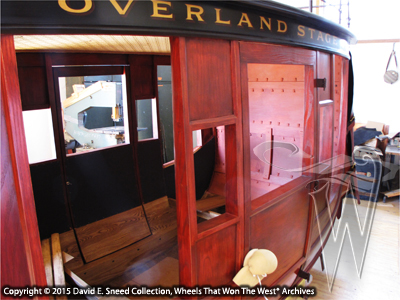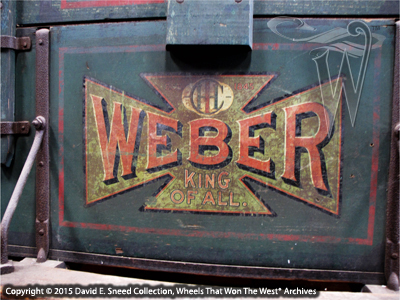Earlier this year, I addressed the term "all-original" as it's sometimes applied to early wagons and western vehicles. This week, we'll cover another term that's strongly connected to originality but is not always the same. 'Authenticity' levels within a period vehicle are always important considerations. After all, the more authentic a piece is, the more it properly reflects a specific region of use, era, purpose, and brand.
Webster's Dictionary defines 'authentic' as something "made or done the same way as an original." As a result, for a wagon and its parts to be authentic, the integrity of the design must match proper period construction. For example, if I have a predominantly original wagon built in 1890 but the spring seat is actually one that is a modern re-creation, made to the exact specifications of what would have been fabricated by the maker in 1890, it is authentic and true to the brand.
 |
| By using original plans and measurements as well as period-appropriate materials, the folks at Hansen Wheel & Wagon Shop have consistently reinforced the powerful legacy of the Concord stage coach. |
Authenticating a wooden vehicle and its parts requires that multiple areas such as timeframe of manufacture, brand, construction style, technology, condition, and period adaptations be evaluated for consistency with original construction. Let's take a look at some of those points...
- Timeframe of manufacture - Horse-drawn vehicle makers often changed design standards and paint configurations over time. As a result, it's sometimes easy to spot mismatched pieces that are neither original nor authentic to a particular time period. As an example...I once knew of someone wanting to incorporate the Winona Indian maiden logo within some restoration work being done on their vehicle. The timeframe of the maiden was not a match to the era of manufacture for the vehicle. So, even though both the wagon and the logo represented the same brand, in that particular case, the re-painted logo would not have been an authentic tie to the original build date of the vehicle.
- Brands - With tens of thousands of wooden wagon brands produced in the U.S. (and many Canadian brands also seen in the U.S. today), significant efforts are sometimes required to identify and authenticate a wagon in its entirety. Virtually every brand had telltale design features that can help confirm whether a part is original or an authentic re-creation mirroring proper designs/styles.

This logo artwork showcasing the Weber brand is a decalcomine transfer originally applied by the maker in the early 20th century.
- Technology - To some, an old wagon is just an old wagon; meaning that there can be an assumption that these pieces are too similar to determine differences. The reality is that every technology and design feature on period wagons had a beginning. As a result, we're often able to quickly determine an earliest time of manufacture for a particular vehicle. Regrettably, few professional film makers have realized this and, as of this writing, I'm still waiting for the first, major western movie to consistently use authentic, period-correct wagons.
- Condition - Sometimes modern repairs or the addition of authentic parts can cause newer elements of a vehicle to appear mismatched with original portions of the structure. By appropriately aging replaced and restored parts, the visual integrity of the piece can be reinforced without compromising the correct look and feel of the vehicle. Wear marks, stains, and stress spots are all part of the proper historic appearance of a piece. With that said, I'll issue at least one disclaimer - Poor application of parts and/or treatments can actually hurt a vehicle's historic integrity, resale value, and visual appeal.
- Period adaptations - Sometimes an original end-user made adaptations to a wagon or western vehicle to suit a particular need or preference. One example could involve the addition of a rein tie to the upper end gate of a wagon. While rein ties could be ordered as part of a wagon, many did not have them. As a result, some farmers, ranchers, and pioneers added their own. Even though it may not have been an original part of certain wagons, its presence can still be an authentic and original representation of how the vehicle was used during a particular timeframe.
Ultimately, for vehicle collectors and enthusiasts, both originality and authenticity are important considerations. Each has its place in anevaluation process and each is beneficial to the visual integrity of an antique set of wheels.
Please Note: As with each of our blog writings, all imagery and text is copyrighted with All Rights Reserved. The material may not be broadcast, published, rewritten, or redistributed without prior written permission from David E. Sneed, Wheels That Won The West® Archives.